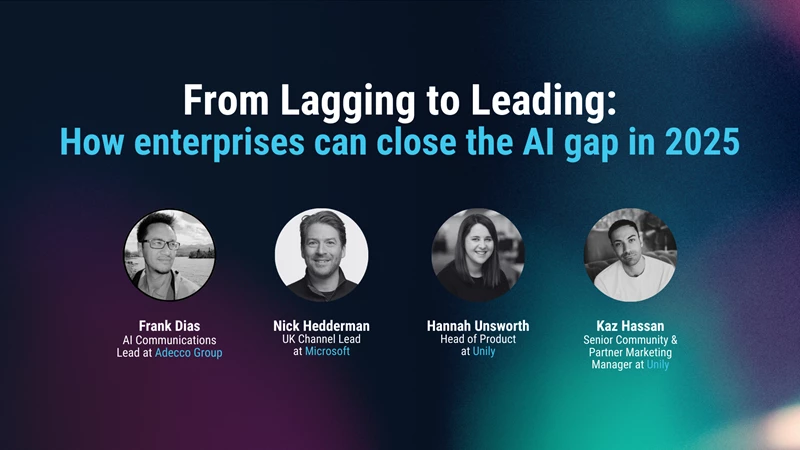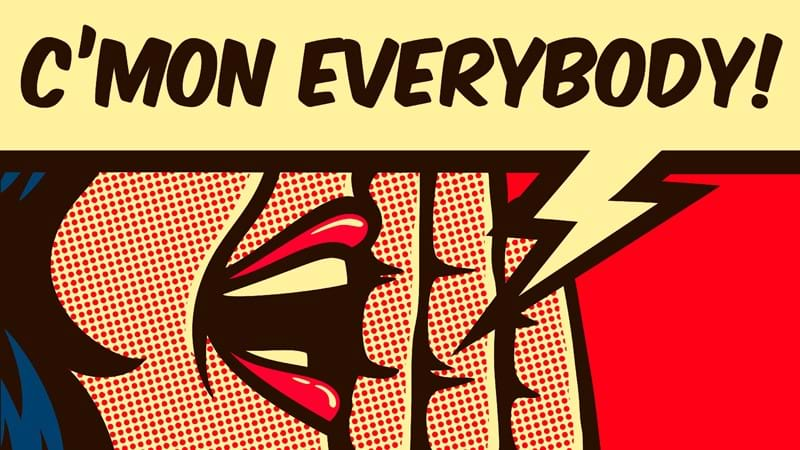How to adapt employee comms for a multigenerational workforce
Never before has the workforce encompassed so many generations at one time. If finding the right blueprint to engage employees wasn’t difficult enough already, this generational smorgasbord only makes it harder. So, how are enterprises adapting their internal comms strategy to meet the expectations of the most multigenerational workforce ever seen?

Understanding the multigenerational workforce
For the first time ever, five generations coexist in the workplace. It’s a historic first and it hasn’t gone unnoticed by astute internal comms professionals tasked with engaging the most diverse workforces the world has ever seen.
In terms of enterprise success, age diversity is a brilliant thing. A Randstad study found that 83% of the executives they surveyed agreed that they were better at coming up with innovative ideas and solutions because they are able to gather input from people of different generations.
But, for internal comms and employee experience leaders, strategies for engaging a multigenerational workforce are in hot demand. We hear it time and time again: ‘How do we adapt our strategy to meet the needs and expectations of employees from such a diverse range of generations?’.
Having partnered with some of the world’s largest enterprises to accelerate employee engagement, we thought we’d share some tips and tricks on how to meet the needs of the most age-diverse workforce we’ve ever had.
3 tips for adapting your strategy to engage a multigenerational workforce
By 2030, millennials (those born between 1981-96) will make up 75% of the US workforce. Right now they comprise 35%, with generation X (1965-80) following close behind at 33%, Baby Boomers (1946-64) at 25%, Generations Z (1997-2012) at 5%, and The Silent Generation (<1946) at 2%.
Every generation has experienced the world and workplace differently, and those experiences have defined their preferences and expectations. It’s not just how they want to be communicated with that might vary, but what they want to hear and read about could be different too.
So how do you go about executing an internal comms strategy that includes everyone? Can you be everything to everyone?
Here are our top tips for overcoming the challenges of engaging a multigenerational workforce.
#1. Analyze, don’t assume
The biggest mistake you can make when it comes to adapting your internal comms strategy for a multigen audience is relying on assumptions and stereotypes. Older workers aren’t necessarily less tech savvy and younger workers don’t all want to watch videos instead of reading articles. So step one for getting multigen communications right, is to check your unconscious biases and start with a blank page.
Instead of relying on assumptions, turn to your people and invest in understanding their needs and wants. Do this by ramping up listening activities and using all your proven techniques for eliciting employee feedback. Use a mixture of intranet platform analytics – slicing and dicing your data by age to understand what types of content are being absorbed, on what channels, in what formats – and more qualitative approaches like surveys, focus groups, and feedback mechanisms embedded across your content.
Use these insights to get to know your people better, observing trends, and validating your findings through conversations. Don’t seek to build a set of defining personas that embody employees of different generations, instead use your insights to identify gaps in your comms approach that can be filled for the good of all.
#2. Bin the cookie-cutter
The idea of creating a cookie-cutter persona that embodies the preferences of employees of different generations might be tempting. But temptation should be avoided in this case. Don’t presume you can create a neat model for how to communicate to a Boomer vs a Gen-Z employee. Be aware of the tendencies among the generations, but allow individualism to prevail by giving users choice over how they interact with content.
The key is to be as diverse as possible in your tone and format, and then let your audience choose what works for them. Be careful to lean into age-based targeting, instead let employees personalize their own experiences with nifty personalization features. You might find gen-z’ers diving into your long-form guides, and Boomers locking into audio and video content on their commutes. When we give our people the freedom to choose, we earn a trust that underpins engagement.

#3. Understand that the basics apply to everyone
Basic comms needs are universal. No matter your age, everyone wants relevant communications that are easy to understand, delivered on the right channels, at the right times. Some people might need more guidance on how to use your platform, how to leverage more modern functionality like social channels or digital reward and recognition features, but the level of education needed may have nothing to do with age. Everyone can benefit from clear guidance and instruction, so you should be providing accessible guides on your platform features as a matter of course.
The reality is internal comms tech is advancing at pace, and meeting the expectations of your users, no matter which generation they fit into, means keeping up with the latest innovations. Gen-Z might be more astute - more critical of outdated modes of comms - but every employee will appreciate tightly targeted, timely comms, accessible on-demand, and available in an array of formats.

That means you need to start investigating the latest innovations from automated campaigns to AI-driven recommendations, and keep communicating to employees about the benefits these investments will bring and how they can utilize them to maximize their value.
Coaching leaders to communicate with multigenerational workforces
Recognizing that communicating with a multigeneration workforce was a challenge facing internal comms leaders worldwide, we covered this topic in our first "Ask an internal comms expert" panel session of the year. Surprisingly, what came out of this conversation was an observation that it is our leaders who may need the most support when it comes to adapting communications styles for multigenerational audiences.
On reflection, it makes sense that leadership communications is an area in need of overhaul. We know that younger employees value purpose over pay, that they seek meaning from work, and are motivated by a desire to positively impact the world. More than ever, our leaders are being asked to set the tone for meaningful work by communicating transparently with a workforce that seeks to be aligned with a compelling company mission.
"It can be quite scary actually for leaders. Like many of us, they’ve grown up in a workplace that hasn't had this level of digital interaction, so it’s scary to have to get out of the comfort zone and try new ways of doing things."

Recognizing this, Sally has focused on coaching leaders to bridge the gap and arm them with the confidence to use new channels and formats strategically, and most critically, authentically.
“Doing it in a way that’s authentic is really important,” she says, “You don’t want your CFO making TikTok videos because they think that’s the right thing to do.”
She recommends leaders start by embracing social channels as a tool for listening to colleagues.
“I've spent time with some leaders across our organization on using our social channels over the last 12 months, just getting them up to speed with the basics. And we've seen that building their confidence. There are some leaders who are great on social already but for some of them, just giving them some basic steps of getting started in a way that's not time-consuming is really helpful.”
Connect your multigenerational workforce and seize the innovation opportunity
At this unique moment in time, we have an opportunity to capitalize on the diverse perspectives that a multigenerational workforce offers. Long-tenured employees have a career’s worth of knowledge to share, while younger workers bring fresh eyes to age-old challenges. Now is the time for enterprises to lean into this advantage, but to do so they must find ways to support collaboration and knowledge sharing in a physically disconnected workforce. The need for a central, consumer-grade platform to connect employees has never been greater.



















